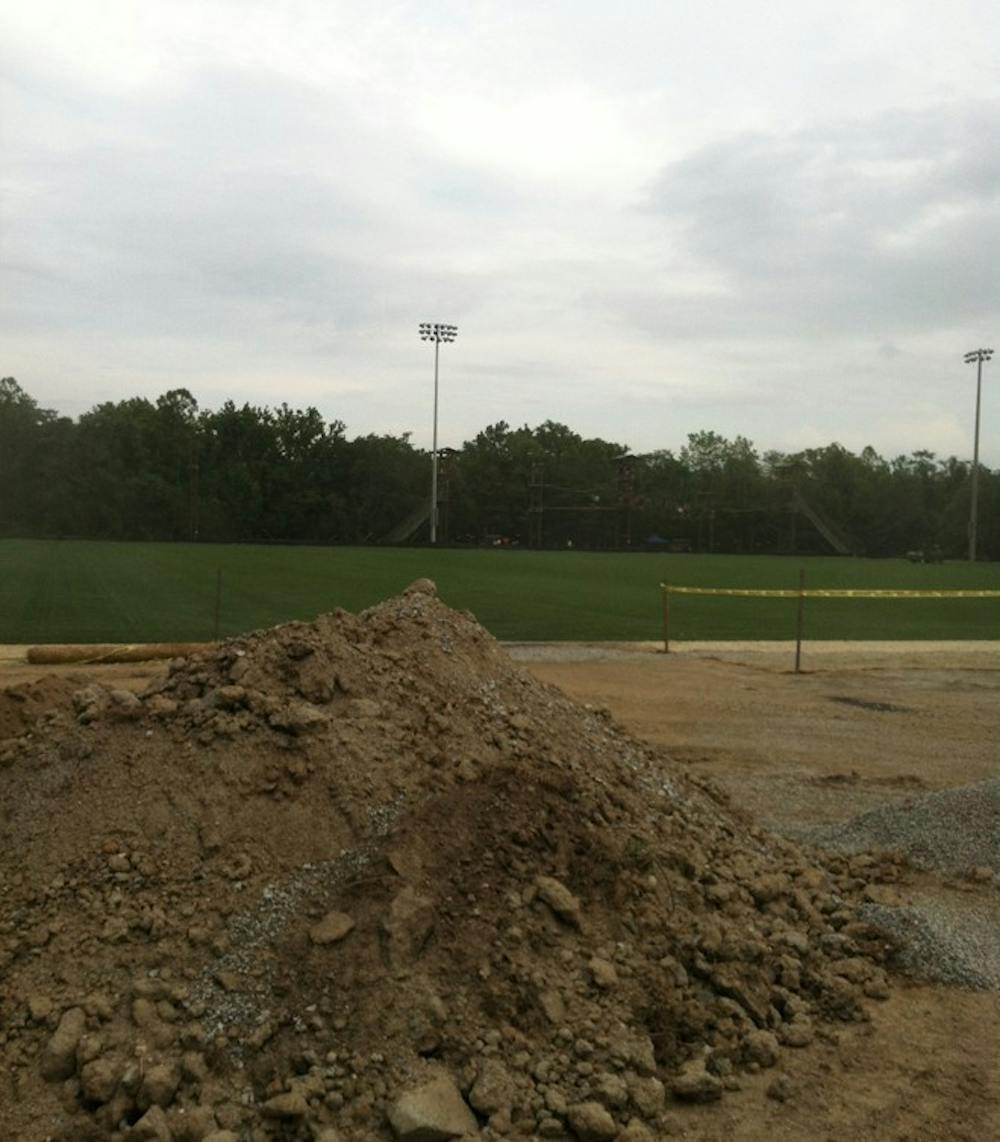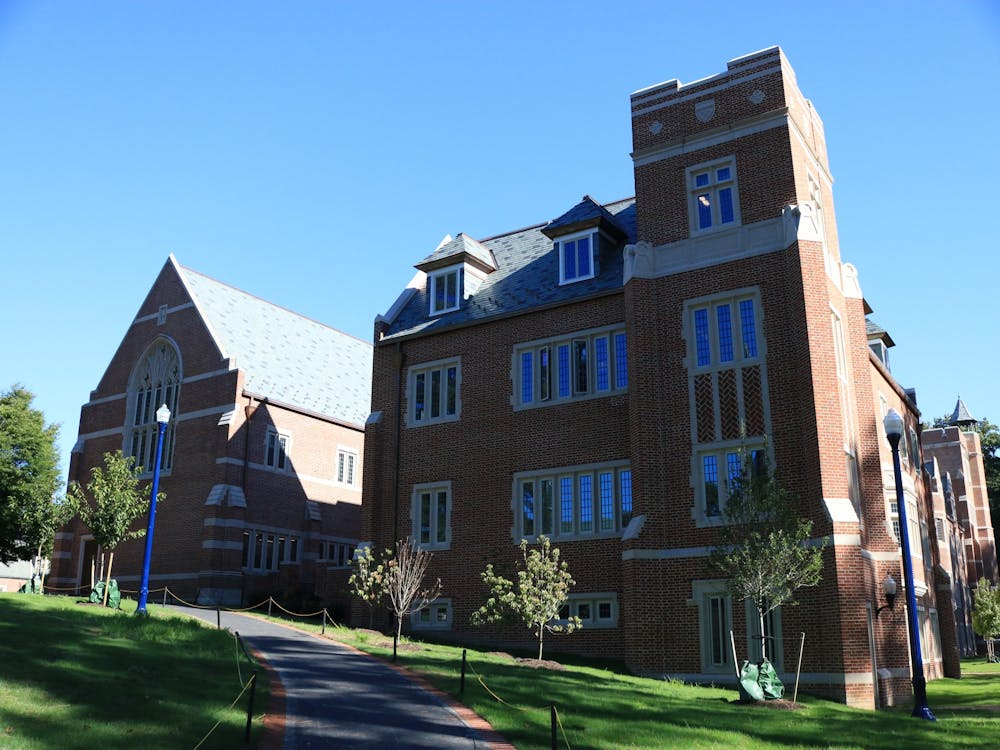The University of Richmond's new turf intramural fields are scheduled to open this weekend and will provide improved lighting, safer playing conditions and fewer game cancellations.
In response to student feedback and the university's Campus Master Plan, members of the Recreation and Wellness and University Facilities staff worked to address the poor conditions of the intramural fields. The two fields, lighting and maintenance equipment cost $1.9 million, said Andrew McBride, assistant vice president for facilities and university architecture.
The fields had been in use for 25 years, Roberts said, and had deteriorated during the last five years.
"We surveyed intramural and sports club participants, and we were always poorly graded in the fields," said Tom Roberts, assistant vice president for recreation and wellness.
"We were at the point where we were cancelling more than 50 percent of our planned activities because of poor conditions," he said. "Sports clubs would go weeks without practicing, and intramural seasons were cut short."
Junior Mike Soriano has played varsity club lacrosse since his freshman year and said he was excited to practice on the new field.
"It's a lot easier to play on because it's an even surface with no divots, which makes for a faster paced game," he said of the new turf.
Steve Glass, the university facilities horticulturalist and landscape manager, was the on-site project manager during construction. After seeing the centers of the grass fields get torn to dirt from overuse year after year, Glass agreed the changes were needed from a maintenance perspective.
"Natural grass simply couldn't stand up to the amount of use that field received. With a synthetic field, you can play in the rain, whereas on a grass field that's not always the case," Glass said.
Soriano agreed that rain delays and cancellations were difficult to avoid on the old fields, which he said would quickly become too muddy to play on.
All club and intramural sports will have scheduled games and practices on the turf fields, which include a special padded layer to provide extra support for sports such as rugby, Roberts said.
"We chose what we found to be most similar to playing on a natural grass surface, and because of the variety of sports we have playing out there, that's what we wanted to mimic," said Marti Tomlin, assistant director of facilities in recreation and wellness, who researched the synthetic turf options.
Enjoy what you're reading?
Signup for our newsletter
But some students are wary of the changes. "I tend to be a bigger fan of grass," Zachary Kerr, a junior who plays intramural soccer and football, said. "But it's a great upgrade just in terms of being able to go out and play regardless of weather; it's a quality surface to play on," he said.
Amy Reader, a sophomore on the Quidditch team, said she had played other sports on a turf field, but never Quidditch. "Turf hurts when you fall on it, but in the long term it's a smart choice, I guess," she said. Despite the new material, Reader said she wasn't nervous to play and was excited to start practices next Wednesday.
There will now be only two, rather than three, intramural fields, Glass said, because the university plans to build on the area in the future. Roberts and Tomlin said the athletic department staff had been cooperating more to make other fields available to sports clubs and intramural teams during the transition.
Although the project was delayed about a month, Glass said the field should be opening this weekend, only a week behind schedule.
New lights have been installed and feature two settings not found on the old fields: one for recreational play and a second that meets NCAA requirements, Glass said. New features coming this fall include an improved sound system and new portable bleachers, he said.
Tomlin said one of the benefits of the turf field and new lights was that groups were more willing to practice at times previously deemed undesirable because the conditions would be stable. "We're excited and hope the improvements will encourage more students to join sports clubs and participate in intramurals, but the fields are for all students and should increase informal recreation as well," she said.
Sportexe, the turf brand, offers a guarantee of eight to 10 years. The Robins Stadium field, which was also replaced this summer, lasted eight years, and Glass said this was a more realistic estimate because of the amount of use the fields got.
Glass and Roberts both declined to comment on the total cost of the project. Roberts said the amount was still being calculated.
Contact staff writer Taylor Cloonan at taylor.cloonan@richmond.edu
Support independent student media
You can make a tax-deductible donation by clicking the button below, which takes you to our secure PayPal account. The page is set up to receive contributions in whatever amount you designate. We look forward to using the money we raise to further our mission of providing honest and accurate information to students, faculty, staff, alumni and others in the general public.
Donate Now



